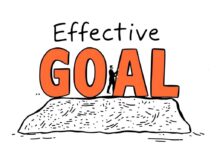How to stop procrastinating and start moving forward

Identify your primary task and allocate a specific time slot today to initiate progress. Break the larger project into manageable components, tackling one at a time. This approach not only enhances energy but also clarifies your path forward.
Utilize tools like timers or apps to structure your time management. Set intervals for concentrated work followed by short breaks. This strategy combats distractions and keeps momentum alive, allowing you to build on each success incrementally.
Visualize completion of tasks. Create a checklist to monitor progress, celebrating small victories along the way. By shifting focus from hesitation to execution, you transform potential energy into tangible results.
Lastly, surround yourself with motivating influences–whether through inspiring content or supportive peers. This network can provide the necessary push to move past inertia and embrace productivity.
Identify Your Triggers
Recognizing what prompts delay is the first step toward enhancing productivity. Keep a journal for a week, noting moments when you find yourself distracted or postponing tasks. Identify patterns in your behavior that lead to these instances.
Common triggers include specific environments, times of day, or emotional states. For example, if cluttered spaces divert your focus, create an organized workspace that promotes concentration. If fatigue sets in during late afternoons, adjust your schedule to tackle demanding tasks earlier.
Consider external distractions as well; notifications from devices can break your rhythm. Turn off non-essential alerts while working on crucial projects to improve time management and maintain focus. Establish boundaries with your environment and communicate them clearly to others.
Track how different stimuli affect your workflow. This awareness allows you to preemptively address distractions before they escalate into procrastination. By understanding these triggers, you can devise strategies to mitigate their impact and cultivate a proactive mindset.
Incorporate techniques like the Pomodoro method–working in focused bursts followed by short breaks–to enhance concentration and reduce the likelihood of succumbing to distractions. Adjusting your approach based on identified triggers will help streamline efforts and foster a more engaged work style.
Set Clear Deadlines
Establish specific timeframes for each task. This creates a sense of urgency that fuels energy and minimizes delay. Break larger projects into smaller, manageable segments, each with its own due date.
Create a visual timeline or checklist to track progress. A clear overview helps maintain focus and reinforces commitment to goals. Regularly update this list to reflect completed tasks and upcoming deadlines.
Avoid vague timelines; instead, be precise in your deadlines. Instead of saying “next week,” specify “Friday at noon.” This clarity enhances time management and reduces the likelihood of procrastination.
Cultivate accountability by sharing your deadlines with others. Informing colleagues or friends about your commitments can provide additional motivation to meet them on time.
This structured approach transforms tasks into actionable items with defined endpoints, ensuring you remain engaged and focused on achieving your objectives efficiently.
Break Tasks Down
Divide larger projects into smaller, manageable components. This strategy maintains energy levels and enhances focus by allowing you to concentrate on one task at a time. For example, if your goal is to write a report, break it down into sections like research, outline, first draft, and revisions.
Assign specific timeframes for each segment. Instead of viewing the entire project as overwhelming, see each piece as a mini-goal. Completing these smaller tasks creates momentum and reduces delay.
Create a checklist for these components. Checking off items not only provides a sense of accomplishment but also visually demonstrates progress. This method reinforces motivation and keeps energy high.
If you encounter obstacles with any segment, reassess and adjust your approach instead of abandoning the task altogether. Flexibility allows you to maintain focus while still progressing toward your ultimate objective.
Cultivating this habit transforms daunting projects into achievable steps. The satisfaction from completing each small task fuels further efforts and diminishes resistance to starting new initiatives.
Create a Reward System
Implement a structured reward mechanism to boost motivation and enhance productivity. Define specific milestones for tasks, and assign tangible rewards for achieving them. This could range from taking a break, enjoying a favorite snack, or indulging in an episode of a beloved show.
Link rewards to effort: The more challenging the task, the greater the reward should be. For instance, after completing a significant project, treat yourself to a day off or an experience you cherish. This connection reinforces positive behavior and fuels energy levels for future endeavors.
Establish short-term and long-term incentives: Short-term rewards can maintain focus during daily tasks, while long-term benefits provide motivation for larger goals. For example, if you finish your weekly objectives ahead of schedule, plan a weekend getaway as an incentive.
Maintain accountability by sharing your goals with friends or colleagues; their support can amplify the effectiveness of your reward system. Encourage each other to stick to commitments and celebrate achievements collectively.
Regularly assess and adjust your reward system based on what genuinely motivates you. This adaptability ensures sustained interest and keeps your energy high throughout various tasks.
Stay Accountable with Others
Engage with peers or join groups that share your goals. This connection fosters a sense of responsibility, making it harder to delay tasks.
- Find an accountability partner who can check in on your progress regularly.
- Participate in study or work sessions to maintain momentum and energy.
- Share your goals on social media or within a community forum to increase commitment.
Utilize technology to enhance accountability:
- Use apps designed for task management that allow others to monitor your achievements.
- Create group chats where members report their daily or weekly accomplishments.
Establish regular meetings with your accountability group. Discuss challenges and celebrate victories together. This collaborative effort transforms time management into a shared experience, reducing the likelihood of procrastination.







